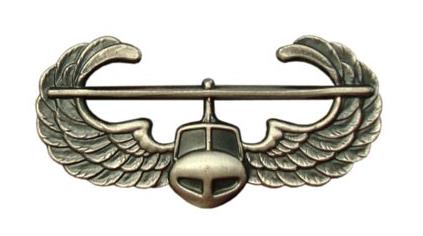Military Aviation History - Air Assault Letterbox Hybrid
Military Aviation History - Air Assault
-
Difficulty:
-

-
Terrain:
-

Size:  (other)
(other)
Please note Use of geocaching.com services is subject to the terms and conditions
in our disclaimer.
Military Aviation History
Air Assault
Initially meant to be an experimental unit, a new U.S. Army unit was formed at Fort Benning, Georgia on February 11, 1963. It was the 11th Air Assault Division which combined light infantry with integral helicopter transport and air support. Opinions varied as to the level of support the concept received within the Army; some argued that the initial tests against the context of conventional warfare did not prove promising and despite opposition from the Joint Chiefs of Staff, it was primarily the Secretary of Defense Robert McNamara who pushed through the changes in 1965, drawing on support from within the Pentagon which had begun to establish a counter-insurgency doctrine that would require just such a unit. Others have put weight on the support of newly appointed senior Army commanders, including the new Chief of Staff General Wheeler, as driving through the changes which would create an Air Assault Division.

Nonetheless, the 11th Air Assault Division assets were merged with the co-located 2nd Infantry Division and reflagged as the 1st Cavalry Division (Airmobile), continuing the tradition of the 1st Cavalry Division. Within several months it was sent to Vietnam and the concept of air mobility became bound up with the challenges of that campaign, especially its varied terrain - the jungles, mountains and rivers which complicated traditional ground movement.

ORIGINAL (UNOFFICIAL) AIR ASSAULT WINGS
The first unit of the new division to see action was the 1st Battalion, 7th Cavalry Regiment, led by Lieutenant Colonel Harold G. Moore. The 7th Cavalry was the same regiment that General George Custer had commanded at the ill fated Battle of the Little Bighorn. On November 14, 1965, Moore led his troops in the first large unit engagement of the Vietnam War, which took place near the Chu Pong massif near the Vietnam-Cambodia border. It is known today as the Battle of Ia Drang Valley and is considered to be the first large scale helicopter air assault operation. This unit gave common currency to the term "Air Cavalry." Units of this type may also be referred to as "Airmobile" or with other terms that describe the integration of air and ground combat forces within a single unit.

AIR ASSAULT LANDING AT THE IA DRANG VALLEY
In 1968 the 101st Airborne Division relinquished its parachute capability and took on the structure and equipment of an Airmobile Division, leaving the 82nd Airborne Division as the U.S. Army's only remaining parachute division. The 101st was now using helicopters to transport troops and supplies. This new advantage made the 101st an obvious choice for the Vietnam War. Dense jungle made the use of helicopters highly desirable because of the maneuverability helicopters offer. This ability allowed the 101st to accomplish more missions than any other unit during the war. In the U.S. Army today, the air assault mission remains the primary role of the 101st Airborne Division (Air Assault), which is a division-sized, helicopter-borne fighting force. Many of its soldiers are graduates of the Air Assault course qualifying them to insert and extract using fast rope and rappel means from a hovering helicopter, in addition to the ordinary walk on and off from a landed helicopter.

OFFICIAL AIR ASSAULT WINGS
This is a Letterbox Hybrid Cache. A letterbox is another type of treasure hunting using clues instead of coordinates. Once a letterbox is found instead of signing a log book, you place your stamp mark in the letterbox's log book and place the letterbox's stamp into your own log book.
In some cases such as this, a letterbox hybrid has coordinates, making it a letterbox and a geocache. You can leave your stamp and get the cache's stamp in your own log book as in letterboxing, or you can simply sign the log book as in geocaching, or both.
This cache is a regular sized container, placed in a regular type of place. This cache was placed during the "Heli-Caching Flyby" event; thus the name and theme seem to fit quite well; however, it can be found by anyone, with or without the use of a helicopter.
This letterbox hybrid contains:
- A log book. BRING YOUR OWN PEN.
- A rubber stamp. BRING YOUR OWN INK PAD.
PLEASE LEAVE THEM IN THE CACHE!!
| If you are a Geocacher in eastern Washington or northern Idaho, please join the Inland Empire Chapter of the Washington State Geocaching Association. This is a great way to get the most out of Geocaching in our region. Simply go to the WSGA Web Page for details! |
 |
2015 was the inaugural year of Spokane GeoTour. This Spokane County tour sent geocachers on a trip through Spokane History, finding caches in areas of historical significance. Visit urban and rural gems, historic farming communities, forts, geological marvels, and seek new adventures. The Spokane History GeoTour officially ended in spring of 2017 to make room for another tour; however, this cache remains and is still available to be found.

Additional Hints
(No hints available.)